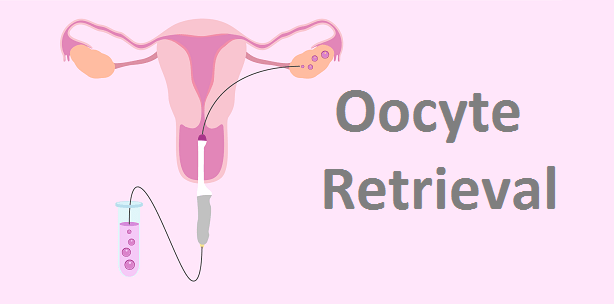Oocyte Retrieval in IVF Treatment

Oocyte retrieval is the second step of IVF treatment – a fertility treatment that helps the childless couple to conceive. Four to five steps are incorporated in the IVF treatment, where the first is giving the fertility medication to the woman and then after few visits in the centre (once the eggs become mature to take out), there comes the procedure of Oocyte Retrieval in IVF treatment. Oocyte retrieval also known as egg-pick up/ follicles aspiration; during the procedure, fertility specialist of We Care IVF Surrogacy carefully picks the egg via a medical hollow-tube under local anaesthesia so that the patient won’t feel any discomfort during the process.
Oocyte Retrieval in IVF treatment must be performed by the experienced fertility doctor and knowledgeable team. This is somehow a crucial method and needs proper attention and an expert’s hand.
Preparation of Oocyte Retrieval –
During an IVF cycle the development of the ovarian follicles is closely monitored. When the optimal number of follicles is close to maturity, the patient takes a ‘trigger’ injection of Human Chorionic Gonadotropin, or hCG. hCG induces a response in the granulosa cells which surround each oocyte inside the follicles. In response to the trigger injection the granulosa cells begin to release the egg, and stop producing estrogen. The granulosa cells switch over to making progesterone, which supports early pregnancy by thickening the uterine lining.
The hCG trigger injection must be precisely timed, as oocytes retrieval must happen between 34 and 36 hours after the injection. It is vital to take the hCG at the proper, scheduled time as arranged with your IVF clinic or specialist.
Meanwhile, the male partner (or sperm donor) should be midway into a 3-day period of sexual abstinence. 3 days is thought to produce an optimal quantity of healthy, active sperm — longer means that too many dead soldiers will have built up, while less time means fewer recruits will be available for the mission. (Military jargon helps distract men from the fact that their sole direct contribution will be to wank into a plastic cup.)
The day before retrieval, the retrieval candidate typically begins an antibiotic program, which is intended to prevent any possible infection from the retrieval procedure. Note that the antibiotic should not be taken on the morning of retrieval — it may be taken soon afterwards, instead.
As is the case for most surgical procedures, the female patient should avoid eating for at least 12 hours previous. Most retrieval is done in the morning. Patients and their partners should avoid perfumes, scented soaps, etc. as the eggs are sensitive to chemical compounds. The partner or a friend or relative must accompany the patient, as the relaxant drugs and local anesthetic will require her to have a companion for the trip home after the procedure.
Most physicians prefer the patient to have an almost-full bladder before the procedure, as it makes the ovaries easier to find on the ultrasound. Some may not require this.
At the clinic the patient will change into a medical gown. She will likely receive the first of a series of relaxants, to calm her before the procedure. An IV drip will be started. The nurse should also check for any allergies to the painkiller meds that will soon be administered (such as a mix of torodol and morphine) as well as penicillin or another antibiotic, which will usually be administered via the IV line.
The Process of Oocyte Retrieval
The patient is taken to the retrieval room, where she gets onto a gynae bed or exam table. The nurse and staff will make sure that the right person’s in the right place, and then get the patient ready. A speculum is used to open the vagina, and the cervix is examined. Vagina and cervix are cleaned as needed before proceeding.
The patient is given a light local anesthetic to freeze the inside of the vagina where the operation will occur. Since there are no nerve endings there, patients normally feel no discomfort from this (often described as similar to a pap smear).
An ultrasound is used to guide a narrow-gauge needle, which is carefully poked through the vagina wall and into one ovary, where the ultrasound probe is then used to guide the needle. Each mature follicle is then found and aspirated, draining the fluid and egg out into a waiting test tube (indeed, a series of test tubes). The patient typically feels no discomfort other than a bit of pressure as each follicle is penetrated by the needle. Once each follicle in the ovary has been processed, the process is repeated for the other ovary. Typically, one ovary will have the majority of the mature eggs.
As the test tubes are filled, they are passed to the lab, which is usually in the next room. The embryologist or lab technician will use a microscope to find and count the eggs. Usually the embryologist will call out the count to the nurse, who will keep the patient informed as work progresses.
When all the eggs have been collected, the doctor withdraws the equipment, and checks to ensure that the vagina wall is not bleeding where it was punctured by the needle. The patient is transferred to a stretcher and taken out to the recovery room. After a short rest (usually around an hour) the patient and her partner or guardian are allowed to return home.
After Care
The patient will typically need about 24 hours to rest and recover. In order to avoid infection, the patient should avoid placing things (tampons, etc.) into the vagina — although some physicians may recommend intercourse the day before transfer. (Whether this is merely for psychological value is unclear.) The patient should avoid baths, hot tubs, swimming etc. for two weeks after the retrieval, to give the vagina walls time to heal before being immersed in liquid.
Typically the patient will continue an oral antibiotic protocol for several days after retrieval.
What Happens Next
In the lab, the embryologist introduces the eggs to the sperm, and cultures the eggs over the next three days. The patient will be contacted with the number of eggs that fertilized, and their progress over the three days. On day three after Oocyte Retrieval, the patient returns for transfer of up to two pre-implantation embryos into the uterus.
There comes the end of an IVF treatment. After transferring the embryo into the patient’s uterus, the specialist says the couple to wait for a week or so, and then the pregnancy test happens. If the embryo has attached into the uterine wall well, there would be positive result of the test. Pregnancy via IVF treatment is normal as the pregnancy in natural conception.
We Care IVF Surrogacy has the best team of fertility coordinators and veteran squad of fertility doctors along with the best IVF centres providing high success rate. If you have any doubt on the subject of Oocyte Retrieval or IVF treatment, without any hesitate you can contact our support team!



